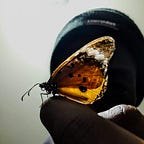The Importance of Wearing Masks During the COVID-19 Pandemic
Explaining Results from an Insecticide Aerosol Experiment
I think it safe if I presuppose that the individual reading this write-up already knows a thing or two about COVID-19. I, thus, do not wish to bore the reader with redundancy. My interest merely lies in demonstrating how the wearing of masks helps reduce the risk of spreading the virus.
Foremost, I must remark that the battle against misinformation is grander than meets the eye. While others think it harmless and/or ludicrous, misinformation has the capacity to shape one’s behavior and, when held collectively, direct the course of our immediate societies. As I walk around the city of Lilongwe, I am in awe of the number of people not wearing masks.
It has been established that the disease-causing pathogen — SARS-Cov-2 — is airborne. The virus is carried by aerosols (gaseous suspensions of fine solid or liquid particles) that we produce when we speak and breathe. I conjectured that people neglect the wearing of masks because they are not able to see the aerosol they produce. Hence, the lack of understanding how masks fit into the equation may be the culprit.
In my simple experiment I wanted to show that a mask is able to block aerosols. I decided to use an insecticide, a surgical mask and a thin layer of cloth. The pressure of the aerosol from the insecticide and its distance from both the mask and cloth were constant. The aerosol from the insecticide is meant to represent the aerosol we produce when breathing and speaking.
In the first part of the experiment, the insecticide is being sprayed with nothing in its way. It is shown that the aerosol travels a greater distance and the particles eventually spread around the room. This information — without ignoring the pressure factor — can be extrapolated to an individual who is not wearing a mask.
In the second instance I introduce a surgical mask in front of the insecticide. The evidence in the video suggests that the aerosol particles have been blocked. I am unable to assign a numeric value to the amount of particles blocked, but I can confidently assert that a significant amount of aerosol from the insecticide has been blocked. Wearing a mask should, I infer, give a similar effect to the aerosol we produce.
I introduced the last bit of the experiment — the thin layer of cloth — not to compare the difference in the efficiencies of the materials but to draw a simpler conclusion on the importance of wearing any protective covering. I do not think it wrong to establish that the pressure of the aerosol from the insecticide is orders of magnitude bigger than the pressure of the aerosol we produce when speaking. It can, however, be noted that despite the single layer of cloth allowing some of the aerosol from the insecticide to pass through, the cloth is comparatively doing a better job at reducing the amount of aerosol released than in our first, mask-less instance.
My reasoning, therefore, leads me to infer that if a thin layer of cloth is able to block some insecticide particles under such high pressure, it should do a decent job at blocking human-produced aerosol. Without hinging so much on the varying efficiencies of masks, I think that this does a fair job of showing that wearing a mask (appropriately) is way better than wearing no mask. It is my hope that the experiment removes any lingering doubts on how masks reduce the spread of SARS-Cov-2. Curbing the spread of the virus, among others, depends on you wearing a mask.
